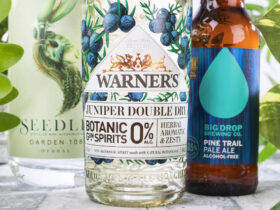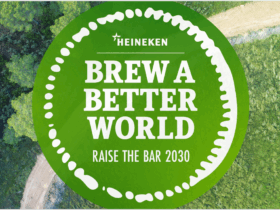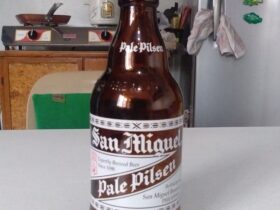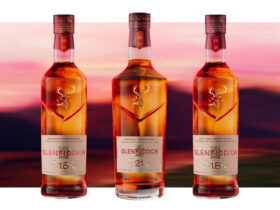
Against a challenging backdrop for the global industry, RTDs offer growth opportunities in most leading markets, with brand engagement and channel expansion the keys to future success for producers.
RTDs continue to be the growth category to watch in beverage alcohol, with consumers drinking more frequently and widening their purchase channels and occasions—which are set to be key drivers of future category expansion, says an IWSR report.
RTD volumes in 10 of the world’s leading markets (Australia, Brazil, Canada, China, Germany, Japan, Mexico, South Africa, UK, US) —accounting for 82% of global volumes—grew by +2% in 2024, according to IWSR’s RTDs Strategic Study 2025, with value rising by +4% over the same timescale. RTDs now have a 3.5% share of TBA servings in these markets, up from 1.1% in 2014, the IWSR report adds.
Category growth has slowed, but RTDs continue to outpace total beverage alcohol (TBA) growth in eight out of the 10 markets, with only China and Australia—both currently suffering structural decline across TBA—lagging behind.
Growth hotspots include South Africa, where RTD volumes expanded by +12% in 2024, elevating it from fifth to third rank among the top 10 markets; and Brazil, also with a +12% gain last year. While volumes in China (-14%) and Australia (-6%) declined in 2024, the other six markets all grew, but at a slower rate than their 2019-24 CAGR volume increases. In the US, volumes were up by +1% last year.
“In an increasingly competitive TBA market, RTDs are the beacon of hope,” says Susie Goldspink, Head of RTD Insights. “The biggest growth opportunities lie in established markets where RTDs already hold a TBA volume share of more than 5%. Despite a recent slowing of growth, RTDs will continue to gain share of TBA, particularly in the strongholds of the US and Canada, which are more diverse RTD markets, and in Japan, although it offers less product diversity.”

Across the 10 key markets, IWSR forecasts predict that RTDs’ share of TBA servings will reach 4% by 2029, up from 2% in 2019. The category has a particularly strong TBA servings share in the US (8% in 2024), Canada (8%), Australia (9%) and Japan (13%).
Future absolute volume gains will be concentrated in four markets, mostly established destinations where RTDs have a higher TBA share, plus Brazil. IWSR forecasts predict 2024-29 CAGR volume growth of +1% for the US, +3% for South Africa, +7% for Brazil and +3% for Japan.
“However, broader TBA factors are likely to limit opportunities in other RTD strongholds,” cautions Goldspink. “RTDs are relatively expensive in the lower-growth markets of Australia, the UK and Germany. This, along with lower participation levels, ageing consumers and lower frequency in these markets, impacts their potential.”
Growth driven by frequency, not recruitment
Consumer recruitment has slowed as RTDs mature, with only 5% of RTD drinkers new to the category in 2024—mostly younger people reaching legal drinking age. Instead, volume gains are being driven by increased frequency of consumption among existing RTD drinkers—particularly younger consumers.
“Contrary to previous insights suggesting moderation and reduced consumption among younger demographics, Gen Zs are actually driving higher consumption frequency across RTD categories,” explains Goldspink. “Thus, they are an expanding consumer base that presents opportunities for brands to capture long-term market share.”
With Gen X and Boomer RTD buyers consuming less frequently, there is now a clear generational divide in drinking patterns and category preferences. Among RTD drinkers, 54% of Gen Zs consume the category frequently (once a week or more), compared to 56% of Millennials, 46% of Gen Xs and 38% of Boomers.
Flavour’s vital role in consumer choice
Flavour has cemented its position as the most influential factor in RTD purchase decisions across age groups, with price—significantly more important to older buyers—in second place. Meanwhile, younger cohorts are more likely to be influenced by functional health benefits and packaging appearance.
According to IWSR research, citrus flavours—especially lemon—continue to be most popular, but there has been a reduction in lime and grapefruit launches, giving way to NPD focused more on tropical and strawberry flavours.
“Beyond flavour, alcohol content has become a more significant driver of choice among RTD consumers, with buyers seeking out both high- and low-ABV products,” adds Goldspink. “As brand innovation moves away from mid-range ABVs, producers should prioritise diversifying strength options to cater to different occasions and preferences.”
RTDs’ continued threat to wine
Since 2019, across the 10 key markets, the beer category’s loss of servings to RTDs has slowed, while the shift away from wine has accelerated. “While beer is the beverage most buyers consumed before switching to RTDs, wine is substituted more on a relative basis across markets, except in Australia and Germany,” says Goldspink.
However, the line between canned wine and RTDs has become increasingly blurred, with the rival categories often sharing shelf space. “This convergence creates opportunity in the struggling wine category,” says Goldspink. “Canned wine products offer the same convenience as RTDs and, often, the same appealing branding, convenience and positioning.”
Channel share diversifies
As the RTD category expands and matures, it is gaining ground in the on-trade, as well as in the on-the-go and e-commerce channels, where buyers skew younger and favour impulse purchases for immediate consumption.
The on-trade had an 8% share of RTD volumes in the 10 key markets in 2021, according to IWSR data, but this has since risen to 12% in 2024. Strong on-trade markets for RTDs include Brazil, where the channel holds a 37% share of category volumes, and South Africa at 30%.
Brand extensions – a risk?
Consumer research conducted by IWSR in Australia, Canada, Germany, Japan, Mexico, the UK and the US found that RTD extensions of spirits brands were viewed positively, boosting purchasing intent—but the findings also suggest that this could come at the cost of premium brand image.
“Across most markets, RTD extensions of spirits brands are seen as cool, fun products that consumers want to try,” explains Goldspink. “However, such extensions can compromise a brand’s premium positioning and special-occasion appeal, suggesting that it may be beneficial to use mainstream brands for RTDs instead of premium ones.”











Leave a Reply